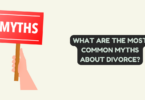
Personal Injury
Personal injury claims can arise from accidents and incidents, from slips and fall to medical malpractice. If you were hurt in an accident when the injury was caused by the negligence or conduct of another party, you could receive compensation for the damages you suffered.
However, the legal process for pursuing a personal injury claim can be complex and overwhelming, especially when dealing with insurance companies and medical bills. This blog post will give you a general overview of personal injury claims and the actions you should take to safeguard your rights and interests.
Hire a Personal Injury Lawyer
One of the most crucial steps you can take to safeguard your rights and increase your chances of achieving fair reimbursement is finding a personal injury attorney. What you should know before selecting a personal injury attorney is as follows:
- A personal injury attorney can evaluate the merits of your claim and spot any potential legal problems.
- A personal injury lawyer can assist and direct the legal procedure, from collecting evidence to discussing an agreement or defending you in court.
- Personal injury lawyers are frequently hired on contingency charges, implying they only earn a payment if they succeed in your legal matter.
It’s crucial to select a reputable and experienced legal firm when selecting an attorney for personal injuries, such as Lawfirm.com, which has a good track record of successful personal injury cases and positive client testimonials. It’s also a good idea to schedule a consultation with the firm to ensure they are a good fit for your needs and that you feel comfortable working with them.
Types of Personal Injury Claims
You can decide whether you have a case for legal action by understanding the various personal injury claim categories. The following are a few of the most typical personal injury claims:
- A range of factors, such as distracted driving, speeding, and impaired driving, can cause Motor Vehicle Accidents.
- Medical malpractice occurs when a healthcare provider, such as a doctor or nurse, fails to provide an appropriate standard of care.
- Workplace accidents can result in serious injuries, such as burns or head injuries caused by unsafe working conditions, equipment failure, or employer negligence.
- Product liability claims arise when a defective or dangerous product causes injury or harm to a consumer.
- Dog bites can result in serious injuries, such as puncture wounds, scarring, and infections. Dog owners can be held liable for damages caused by their pets.
- Wrongful death claims arise when someone dies due to someone else’s negligence or intentional actions.
Determining Fault in a Personal Injury Claim
Any personal injury lawsuit that involves fault must be resolved since it establishes who caused the harm and who shall be held accountable for any damages. Here are some key things to know about determining fault in a personal injury claim:
- Negligence means that the responsible party failed to exercise reasonable care, which directly caused the injury. For instance, if a motorist runs a red light and hits someone, the rider is likely irresponsible and accountable.
- In some cases, a fault may be shared between multiple parties. For example, if a pedestrian is hit by a car while crossing the street but is also distracted by their phone, the driver and the pedestrian may be found partially at fault.
- It is important to gather as much evidence as possible to determine fault, including witness statements, police reports, and video footage.
- In some cases, expert testimony may be needed to determine fault. For example, a medical expert may be called upon to testify whether the healthcare provider followed standard practices and procedures in a medical malpractice case.
- Recognize the legal requirements that are relevant to your situation. You must demonstrate, for instance, that the property owner understood or should have been aware of the dangerous condition that resulted in your harm if you are claiming premises liability.
Compensation for Personal Injury Claims
Factors that may influence the amount of compensation awarded include:
- The injury’s severity and duration.
- The damage’s impact on the injured party’s life.
- The level of fault assigned to each party.
The following list contains the most typical forms of compensation for personal injury claims.
- Economic damages are intended to make up for measurable financial losses incurred by the injured party, such as medical expenses, job loss, and damaged property. Economic damages are frequently granted based on the injured party’s out-of-pocket expenses and may also consider anticipated future costs.
- Non-economic damages compensate for non-tangible losses like discomfort and suffering, psychological anguish, and loss of pleasure in life.
- Punitive damages are meant to punish the person who caused the injury and deter others from participating in similar behavior.
Timelines for Filing a Personal Injury Claim
Depending on the kind of claim being made and the state where the event happened, there may be different deadlines to file personal injury claims. Hence, it is advised to file a claim as soon as possible. The statute of limitations, which usually ranges from one to three years from the date of the incident or injury, is a legal requirement that most states have.
Conclusion
Personal injury claims can be complex and daunting for those who have suffered from an injury caused by someone else’s negligence. However, with the proper knowledge and guidance, individuals can navigate the process more efficiently and ensure they receive the compensation they deserve. It’s critical to get medical help immediately after an accident, compile as much supporting documentation as possible, and speak with a professional personal injury attorney to assess the situation and decide on the most appropriate course of action.






